Ranger Training Guidelines
9 February 2017 2:20pm
Cambridge Meetup, 9th February 2017: Contribute to the first draft of the 'Getting Started Using Drones Guidelines'
7 February 2017 3:25pm
Remote Camera Data Processing - Counting Individual Animals?
10 November 2016 12:30am
3 February 2017 2:00am
Hi Kate, this may be a bit late for your analysis but I will put here for future reference. The case you mention would be to detemine independent events, not necesarily different individuals. Unless there is conspicuous colour, pattern, size, sex or other scars/markings then you shouldn't label them as different individuals. I haven't found much analysis or discussion on this point so it seems prior experience or a "best-guess" is used to determine the time between independent events. Within the R package "camtrapR" vignette it is mentioned (https://cran.r-project.org/web/packages/camtrapR/vignettes/DataExploration.html) "The criterion for temporal independence between records ... will affect the results of the activity plots" and you may have other data to correlate activity with abundance or density.
If you are using and occupancy analysis this may be trivial as you will likely be lumping multiple nights of survey into a single detection period for each camera anyway (we have used six 10-day detection periods for cats in central Aus).
SECR methods may also be more useful for calculating density. Timing of events BETWEEN cameras can be used to show that photos are of different indivduals as they cannont exist in two places simultaneously or travel at fast enough rate to be captured in that time frame (clocks must be synchronised).
I hope you have had as good a season in Bon Bon as we have in Alice Springs. Cheers, Al
5 February 2017 8:58am
The facts are simple. If you violate the assumption of independence of sampling events you will bias the result. In the event of multiple observations by overestimating occupancy due to counting the same animal twice. There is therefore no answer to your problem. People try to overcome it by chosing a particular random number to try and standardise the method across sampling sessions. Let us say we decide to use one hour between new samples in all our sampling sessions. If abundance changes between sessions our ability to detect an animal may change and our result may therefore be biased up or down depending on the trend. So we allow detectability to vary between samples to try and reduce this bias. This is done through assessing the results of the replicate samples i.e. n days.
However, the session time determines how many counts are reduced to presence only and as session time increases the variance of the occupancy estimate may grow. But we don't know if this increasing variance/ loss of accuracy is based on a real loss of information or not because we don't know if we are correctly throwing away information portraying the same individual or information on the presence of multiple individuals. Therefore selection of session time may effect our ability to detect a change in occupancy even with accounting for varying detection. i.e. detection may be equal if our session time is too short. In other words if in both one hour AND two hours we detect multiple animals on the same number of plots, convert this to the binomial (presence/absence), then detectability will be equal for both sessions. But if in one hour we detect half the number of animals as in two hours what does this say about occupancy?
Spatially explict (SE) models will also not help because as far as I know they are based on allowing multiple detections across plots, not within plots. Or cameras in this case.
Having said this there is apparently some hope in marking a portion of individuals to increase the accuracy of SECR or SE unmarked in this case. So my only advice would be to run an experiment with marking some foxes and use a SE model with predominantly unmarked indiviudals.
On a more jovial note you could simply mine the data by assessing the power to detect a change between pre/post baiting using a variety of different session times. The reality of such a result is highly dubious but it might inspire more thought on the behaviour of this particular situation. Failing all this youy could run away and join the circus.
Survey123 and Collector
31 October 2016 3:24pm
19 December 2016 1:24am
I am finding ArcGIS Collector very usefull. I can say, as an dedicated R coder, some things are worth paying money for and Collector is one of the. I have used it to implement several monitoring and data collection projects. I particularly like the assurance that data will not be lost on the device and the ability to cache base maps.
2 February 2017 6:42pm
Dear BPdorsey, Collector will support custom basemaps ? It wasn't an option a few months ago.
3 February 2017 1:59pm
Thanks for the comments so far everyone
We have used custom basemaps in Collector. You need to publish a tile layer to ArcGIS Online,( I'm not sure if an organisational account is needed for this.)add it to your map and then you can download that tile layer to your device
https://doc.arcgis.com/en/arcgis-online/share-maps/publish-tiles.htm
It's 2017
6 January 2017 2:58pm
8 January 2017 9:18am
I'm new to wildlabs, and super excited that this forum exists. I'd worked in technology (hardware design) for about 12.5 years, but am now looking for avenues to use that tech experience towards conservation. Personally, I'm just excited to learn about how and where I can use my skills to aid conservation.
2 February 2017 11:23pm
My organization—Wildlife Conservation Network—is trying to use technology to more efficiently connect the stories of our conservation parters with supporters, and increasing our reach. Video is really the theme for many of our projects this year.
We did livestreaming of our Expo last Fall on both Facebook and YouTube, and that worked out well. We'll be doing the same for our 2017 Spring expo this year. Facebook heavily promotes you on your followers’ feeds when you are live. We ended up with over 12k video views so I highly recommend that you all experiment with Facebook Live this year.
I also just picked up an DJI Osmo Mobile camera gimbal. My initial tests are pretty darn impressive, especially when travelling in a vehicle over bumpy terrain. I’ll be using it on-site in Africa in a couple of weeks, and I expect it will take the quality of the typical field video up significantly.
I'm sure the next step will be to invest in a proper lav mic.
And I’m going to be training our partners on the basics of using iMovie to create and upload their own videos to YouTube.
I know this isn't exactly wildlife tech, but I think that pretty much everyone these days has a fantastic opportunity to document the amazing, cutting-edge work you are doing to share it with the world.
Can acoustic tags be tracked by poachers
2 February 2017 11:08am
2 February 2017 12:38pm
Hi Matt,
This is a very broad question. Short answer, probably not. Narrowing down your problem would help community members get better context. What's the species you're working with? In which country/region is this occuring? How many of the fish are there? What are the current technologies being used to catch the fish by the poachers?
2 February 2017 1:38pm
Hi,
I would be looking at tagging a select number sturgeon fish in Georgia (Eurasia). Currently estimates have their popultion at around 10,000 and I am thinking of tagging around 30 individuals. Currently poachers use non-discriminate methods such as electro-fishing to capture them so I am right in thinking the acoustic tags should be ok?
Thank you for all your help,
Matt
Discussion: Wildlife Institute of India to conduct first tiger estimation in nine countries
28 November 2016 1:55pm
28 November 2016 2:07pm
@wildtiger @Shashank+Srinivasan @NJayasinghe Do you have thoughts on this?
31 January 2017 7:05pm
What species monitoring protcols do you know of that explicitly focus on one species?
-John
Digital technology companies in Europe for large scale citizen science project
4 July 2016 9:25am
4 July 2016 11:18am
I just found out about http://www.1000001labs.org and thethings.io
7 July 2016 9:17am
Hi Julien,
CEH is not a digital tech company, but we are running or collaborating on several national and international CitSci projects, including development of web and mobile apps, graphical design, data visualisations and other. Always looking for new opportunities.
Also, check out Natural Aptitude - a good tech company based in Bristol, UK, that we have worked with before.
Hope this helps,
Karolis
25 January 2017 9:23pm
It might be worth getting in touch with the European Citizen Science Association as well. Some stakeholders whom are developers are already affiliated with ECSA as well.
"Capturing our coast" project seeks citizen scientists to survey UK's coastal biodiversity
10 February 2016 11:47am
25 January 2017 9:21pm
Mangrove Watch over here in Australia might be of interest to you if you don't know about it already :)
Data request: improving drone forest quality assessments
20 January 2017 10:57am
GPS and VHF (RF) tracking technologies, a comparison and other resources
14 January 2017 7:20am
Pangolin Tagging Challenges
13 January 2017 4:02pm
13 January 2017 4:05pm
Hi!
Information I'm looking for also includes needed cost, design specifications, concerns with designs in use now, pictures of transmitters attached to pangolins, or anything similar.
Sincerely,
Priya
Have you used Wildbook?
6 January 2017 4:31pm
Infrastructure impacts
22 December 2016 4:12pm
6 January 2017 10:06am
Hi Nilanga,
This is a topic of my interest too. I have been doing some work on getting some mitigations implemented on some highways in central India. So what excatly do you mean by tools? Some gadget to detect physical presence on large mammals around highways and railway tracks ? Or some software tools to predict animals crossings along them.
Regards
Udayan
6 January 2017 1:36pm
Hi Udayan,
Many thanks for following up and it's great to hear that it's an area of interest for you as well. I'm certainly interested to hear more about the work you've been doing on mitigation actions implemented or being tested to prevent wildlife collisions on highways in central India. Are they early detection tools? By tools, I mean either technology to detect presence and provide warnings to drivers or railway operators, or even tools to predict based on movement patterns. I'm interested in learning about any such measure that is being developed. You may be aware that in the last month alone, around 11 elephants have died from train collisions in northeast India. If there are means being developed to detect presence and prevent such deaths, it would be wonderful to know more about them and how we could test and implement such measures. Look forward to hearing from you.
Best,
Nilanga
Using Parrot technology to save the Sequoias
12 December 2016 4:56pm
5 January 2017 12:33am
Please note that they main use is Parrot sequoia multi spectral sensor, and not specifically Parrot drones.
I think they mainly use 3DR Solo drone for make the mapping of the sequoia.
5 January 2017 10:05am
Thanks for the link, @jprobert ! Parrot Education Blog's own link also here for reference http://edu.parrot.com/blog/2016/12/06/parrot-pix4d-team-forest-canopy-biologists-study-giant-sequoias/
CCI International GIS Day
8 November 2016 1:14pm
8 December 2016 5:58pm
CCI International GIS Day recap
GIS Day at CCI was a great success! We kept it short to try and maximise engagement and so that everyone could meet each other. Attendees have been sent a follow-up email, but if you've not received this or you want to know more then please message me for details.
It would be a great mini-legacy and a testament to the event if attendees could post a brief introduction / recap on this thread; just stating your occupation and interests, or anything that you took away from the event. Thanks to the organising committee @jonathanknox.ffi (FFI), @Tomswinfield (RSPB) and Andy Arnell (UNEP-WCMC). And thanks for the photos, @StephODonnell !
8 December 2016 6:08pm
I'm a GIS Analyst at the RSPB. I'm part of a great team providing GIS technical support within the society. I get to work on everything from producing detailed reserve maps to analysing the effectiveness of protected areas and mapping habitats using remote sensing data. I also get to empower my colleagues to create their own maps by supporting our ArcGIS users and working on our in-house broweser-based GIS Merlin. Right now I'm working on developing our use of Unmanned Aerial Vehicles to produce orthomosaic habitat maps and vegetation height models on our reserves. I'm always interested to hear about other people's projects!
5 January 2017 9:35am
I'm a software developer with the British Trust for Ornithology (BTO), working on online map-based applications for bird surveys (e.g. BirdTrack). My main focus is the databases (Oracle & Postgres, including spatial features) and preparing the GIS data using ArcGIS or QGIS. Our online applications are key to receiving survey data from a large number of volunteers and displaying the survey results back to the volunteers.
I also act as central contact point within the BTO for queries about GIS.
A hive of activity – CAD designers are crafting an open future for bees
20 December 2016 12:00am
Wolf protection vests for dogs
14 December 2016 1:49pm
Discussion: Opinion of TEAM network and Wildlife Insights
7 June 2016 5:36am
24 June 2016 6:08am
Thank you. I had not seen TRAPPER.
I had seen Snoopy, CameraBase, the Sanderson & Harris executables, and TEAM. And none of them had seemed suitable for the work that I was doing.
I will investigate TRAPPER further.
30 June 2016 4:38am
I like TRAPPERs video capability.
I am yet to test it out though.
13 December 2016 12:47am
Hi Heidi,
You might also consider becoming involved in the eMammal project (emammal.si.edu) that the Smithsonian has recently developed. It has tools for both uploading and coding camera trap images, with the bonus that they are ultimately archived and made available by the Smithsonian for future researchers. My opinion is that moving toward open-access data will make all of our efforts more valuable into the future. I'm using eMammal, but not one of the developers or associated with the Smithsonian.
Cheers,
Robert
Parrot/Pix4D Climate innovation grant
6 December 2016 4:36pm
Relocating rhinos to Australia?!
5 December 2016 3:25pm
Measuring distances between GPS points from a satellite collar
12 July 2016 6:55pm
14 July 2016 11:53am
Figured it out.
Even though I was in the right projection (ie: UTM), I was not aware that I had to calculate the coordinates myself. All you need to do is create two new columns for X and Y coordinates, and right click in each column: choose calculate geometry, and then select X and Y according to the column you're at. It calculates the coordinates in your chosen unit (mine is meters). The "new" coordinates can be used then in adehabitatLT to obtain distance measurements in a trajectory.
4 December 2016 5:21am
Hey MGatta, I'm working with adehabitatLt as well, i have a good paper on spatial referencing your data and changing your coordinates to UTM, if you want it (by C.J.Brown).
I assume that the process you did to change to meters was in Excell, before using the coordinates in R?
Kind regards,
Sam
Deploying marker buoys to demarcate an MPA
30 November 2016 2:43am
Experience with DJI drones?
23 March 2016 3:45pm
13 April 2016 10:32am
Hi Jprobert.
I don't have experience with DJI drones but I do have quite a bit of experience with 3DR and drones in general.
What are you using the drones for? Get in touch if you'd like some advice.
Tom
27 November 2016 11:20pm
Hi Jprobert,
I have been trying to use my Phanton 3 proffessional together with Pix4Dmapper to trial out some forest mapping in Principe Island.
if you are interested check it out the interview I give to CNN Inside Africa about how drones and 3D mapping technologies are bringing our knowledge of Principe island’s forests into the 21st Century.
http://edition.cnn.com/videos/world/2016/11/07/inside-africa-sao-tome-and-principe-biosphere-b.cnn
“How Sao Tome and Principe embraced ecotourism: Sao Tome and Principe is promoting small-scale, high-end tourism, preserving the island's ecosystems so they can be enjoyed for years to come. Source: CNN”
Also If you want know more about the use of drones for conservation check the full story at FFI website:
http://www.fauna-flora.org/putting-principe-back-on-the-map-with-3d-technology/
Regards,
Felipe Spina
Linkedin: https://www.linkedin.com/in/felipe-spina-avino-91716193
Open source vs intellectual property
23 November 2016 2:17pm
SMART Hackathon, 28th November in Las Vegas
23 November 2016 11:00am
Conservation Leadership Programme 2017 Award
21 November 2016 12:00am
CSI for the Sea: How Scientists Use DNA to Spy on Whales and Find 'Extinct' Fish
18 November 2016 12:00am
Accelerators For Wildlife Conservation Apps?
31 October 2016 5:35pm
15 November 2016 7:54pm
Hi Judit,
She sounds like a great resource. I will be sure to reach out.
Thank you,
Megan
16 November 2016 3:26pm
Hi Megan,
It sounds very interesting the app you are developing. I am working for a smaller nature conservation Fund and am trying a partnership with a platform that is also in development and aimed at connecting people and organizations, facilitate update and knowledge sharing and increasing the visibility and donor pool of the organisations. As I said it's still in development but you can take a look if you like www.pifworld.com/eng. I am however also very curious to get to know other (potential) tools that work similar.
It would be great to chat one time to get better acquainted, maybe you can send me your contact details by PM if you'd like to follow up?
Best, Anne Alexandre
17 November 2016 5:08am
Hi Anne,
Thanks for reaching out and sharing what you are working on. I will PM you now.
DC Tech Meetup, November 15th
10 November 2016 4:15pm
16 November 2016 12:30pm
It looks like the event went swimmingly @Rachel+Kramer and @jprobert! Did you have a chance to meet any other members or hear about other particularly interesting projects? (photo credit: John Probert)

16 November 2016 7:28pm
It was amazing!!!!





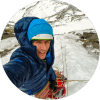


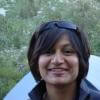








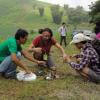
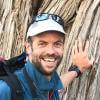

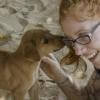
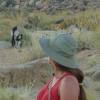

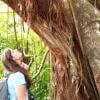
20 January 2017 12:04am
Hi Kate, It all depends on the specie and data set accuracy you are trying to collect. If you are purely documenting frequency of visits, this is straight forward. However, if you are recording numbers then further analysis of photos may be needed. Some animals like foxes have distinctive marks or shapes, whilst smaller mammals can be a lot harder. If this is impossible, then a time limit should be defined across all camera traps. From all the papers I have read and projects we have worked with, there doesn’t seem to be clear standard. Hope this helps. Mike - handykam